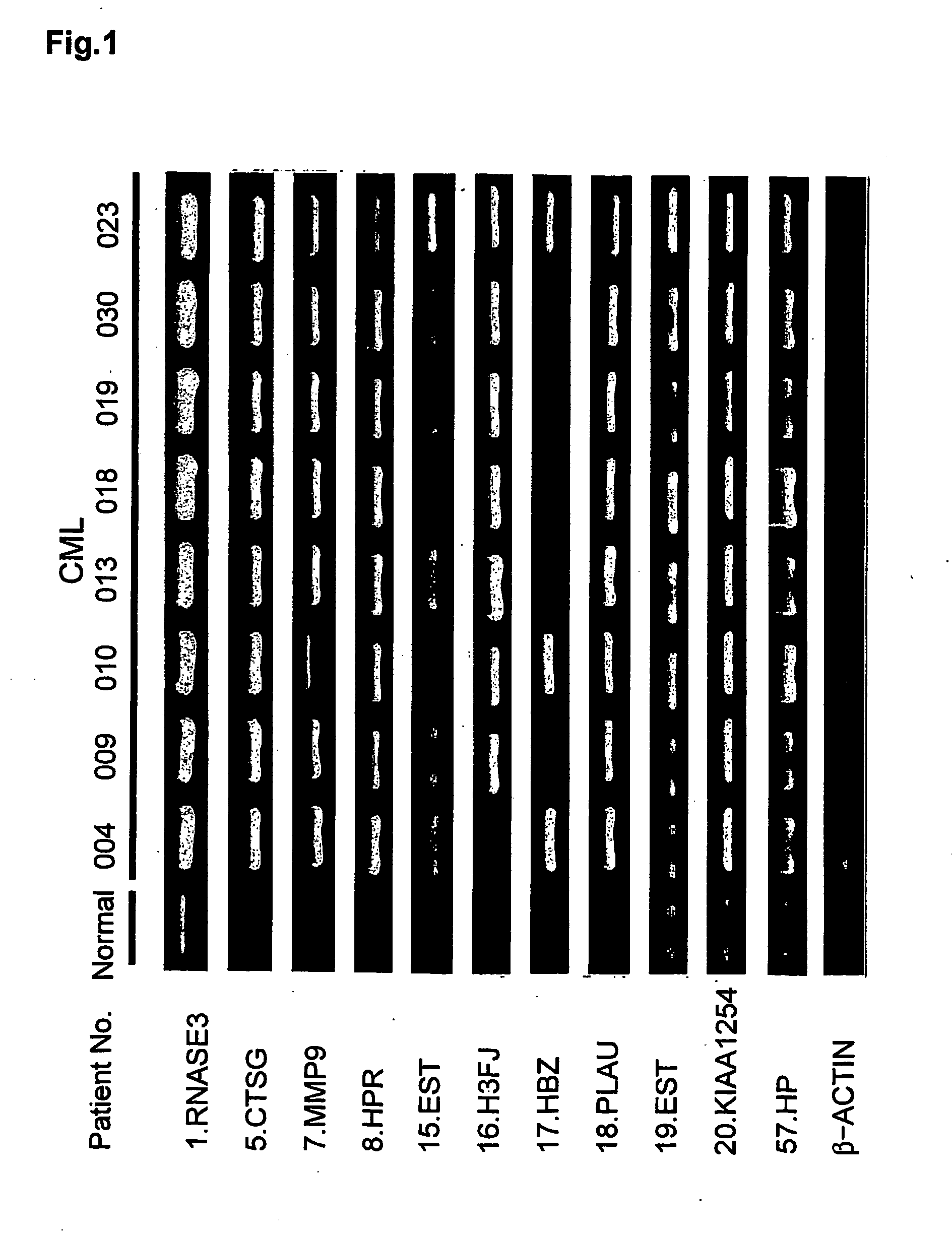Method for diagnosing chronic myeloid leukemia
a myeloid leukemia and chronic disease technology, applied in the field of chronic myeloid leukemia diagnosis, can solve the problems of sti1571-induced hematologic response less frequently, limited to cml patients, and significant adverse effects of ifn- prolonging overall survival,
- Summary
- Abstract
- Description
- Claims
- Application Information
AI Technical Summary
Benefits of technology
Problems solved by technology
Method used
Image
Examples
example 1
Preparation of Test Samples
[0150] Samples obtained from diseased cells and normal cells, e.g., mononuclear cells from peripheral blood, were evaluated to identify genes which are differently expressed in a disease state, e.g., CML. The assays were carried out as follows.
Patients and Samples
[0151] Peripheral blood samples were obtained from 27 CML patients prior to treatment with STI571. Each patient was then enrolled into a phase II study of STI571. To characterize CML cells, mRNA from 27 samples in which more than 65% of cells had been positive for the Ph chromosome prior to treatment by a FISH analysis detecting a bcr / abl fusion gene (13) were analyzed on a cDNA-microarray system. Of the 27, two cases were in accelerated phase and three cases were in blast crisis phase (Table 1). A mixture of mononuclear cells from peripheral blood from eleven healthy volunteers was used as a control.
TABLE 1Clinicopathological features of patients examinedPatient'sPh (+)IDAge (y)Sex(%) aPhas...
example 2
Identification of CML-Associated Genes
[0155] The relative expression ratio of each gene (Cy5 / Cy3 intensity ratio) was classified into one of four categories: (1) highly up-regulated (expression ratio more than 5.0 in more than 50% of the informative cases); (2) highly down-regulated (expression ratio less than 0.2 in more than 50% of the informative cases); (3) low expression (expression ratio between 0.2 and 5.0 in more than 50% of the informative cases); and (4) not expressed (or slight expression but under the cut-off level for detection). These categories were used to detect a set of genes whose changes in expression ratios were common among samples as well as specific to a certain subgroup. To detect candidate genes that were commonly up- or down-regulated in CML cells, the overall expression patterns of 23,040 genes were screened to select genes with expression ratios of more than 5.0 or less than 0.2 that were present in more than 50% of chronic phase of the CML cases catego...
PUM
| Property | Measurement | Unit |
|---|---|---|
| weight | aaaaa | aaaaa |
| concentration | aaaaa | aaaaa |
| composition | aaaaa | aaaaa |
Abstract
Description
Claims
Application Information
 Login to View More
Login to View More - R&D
- Intellectual Property
- Life Sciences
- Materials
- Tech Scout
- Unparalleled Data Quality
- Higher Quality Content
- 60% Fewer Hallucinations
Browse by: Latest US Patents, China's latest patents, Technical Efficacy Thesaurus, Application Domain, Technology Topic, Popular Technical Reports.
© 2025 PatSnap. All rights reserved.Legal|Privacy policy|Modern Slavery Act Transparency Statement|Sitemap|About US| Contact US: help@patsnap.com

